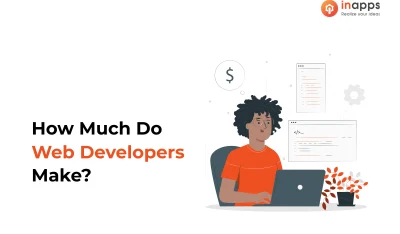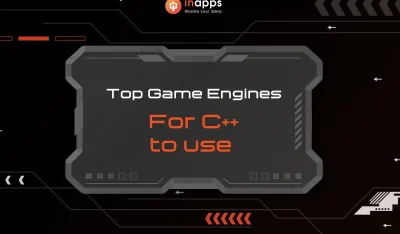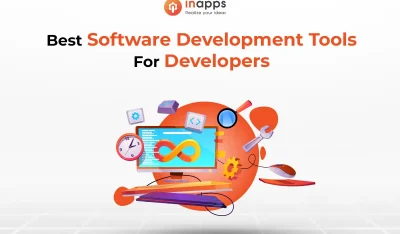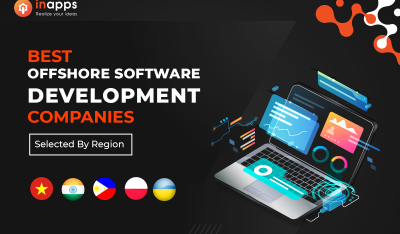- Home
- >
- Software Development
- >
- How to Deploy the Joget No-Code Developer Platform – InApps
How to Deploy the Joget No-Code Developer Platform – InApps is an article under the topic Software Development Many of you are most interested in today !! Today, let’s InApps.net learn How to Deploy the Joget No-Code Developer Platform – InApps in today’s post !
Key Summary
- Overview: The 2022 article by InApps Technology provides a guide on deploying the Joget no-code platform, a tool for building enterprise-grade applications with minimal coding, emphasizing its flexibility, deployment options, and benefits for rapid app development.
- What is Joget?:
- An open-source, no-code/low-code platform for creating web and mobile applications, featuring visual app builders, workflow automation, and integration capabilities.
- Suitable for businesses seeking to streamline processes (e.g., HR, CRM) without extensive coding expertise.
- Key Steps to Deploy Joget:
- Prerequisites:
- Ensure a server environment with Java (JDK 8+), a servlet container (e.g., Apache Tomcat 9), and a relational database (e.g., MySQL, PostgreSQL).
- Minimum hardware: 4GB RAM, 2 CPU cores, 20GB storage for basic setups.
- Download the Joget DX (latest version) from the official Joget website or GitHub.
- Installation:
- Download and Extract: Obtain the Joget WAR file or tarball package and extract it to your server.
- Configure Database:
- Create a database (e.g., jogetdb in MySQL) and configure connection settings in WEB-INF/classes/joget-datasource.properties.
- Prerequisites:
Example:
jdbc.driverClassName=com.mysql.cj.jdbc.Driver
jdbc.url=jdbc:mysql://localhost:3306/jogetdb
jdbc.username=root
jdbc.password=your_password
- Deploy to Tomcat:
- Copy the Joget WAR file to Tomcat’s webapps directory.
- Start Tomcat (bin/startup.sh or startup.bat) to deploy the application.
- Access Joget at http://localhost:8080/jw (default URL).
- Configuration:
- Initial Setup: Log in as admin (default credentials: admin/admin) and configure system settings via the web interface.
- Plugins: Install plugins for additional functionality (e.g., reporting, integrations) from the Joget Marketplace.
- Security: Update default credentials, enable HTTPS, and configure user roles/permissions.
- Deployment Options:
- On-Premises: Deploy on local servers for full control and compliance (e.g., healthcare, finance).
- Cloud: Use cloud providers like AWS, Azure, or Google Cloud for scalability.
- Example: Deploy on AWS EC2 with RDS for MySQL and Elastic Load Balancer for high availability.
- Joget Cloud: Leverage Joget’s managed cloud service for hassle-free hosting and maintenance.
- Docker: Use official Joget Docker images for containerized deployment with Kubernetes or Docker Compose.
- Example: docker run -p 8080:8080 jogetworkflow/joget-dx7.
- Building Apps:
- Use Joget’s App Designer to create apps visually with drag-and-drop forms, lists, and workflows.
- Integrate with external systems via REST APIs, JSON, or pre-built connectors (e.g., Salesforce, Zapier).
- Test apps in a sandbox environment before deploying to production.
- Testing and Monitoring:
- Test app functionality, performance, and security using Joget’s built-in tools or external platforms (e.g., JMeter).
- Monitor logs via Tomcat or cloud provider dashboards (e.g., AWS CloudWatch).
- Maintenance:
- Regularly update Joget to the latest version for new features and security patches.
- Back up databases and configurations to prevent data loss.
- Scale infrastructure (e.g., add nodes) for high user loads.
- Benefits:
- Rapid Development: Build apps in days, not months, with no-code tools, ideal for non-technical users.
- Cost Efficiency: Reduces development costs; offshore teams in Vietnam ($20-$40/hour via InApps Technology) enhance affordability.
- Flexibility: Supports custom workflows, integrations, and deployment models (on-premises, cloud, hybrid).
- Scalability: Handles enterprise-scale applications with robust cloud or containerized setups.
- Use Cases:
- Workflow automation for HR (e.g., leave requests), finance (e.g., expense approvals), or logistics.
- Custom CRM or inventory management apps for SMEs.
- Rapid prototyping for startups or enterprise digital transformation.
- Challenges:
- Initial setup requires technical knowledge for server and database configuration.
- Limited customization for complex apps may require low-code or custom coding.
- Ensuring security and compliance (e.g., GDPR, HIPAA) demands careful configuration.
- Recommendations:
- Start with Joget Cloud or Docker for quick, low-maintenance deployment.
- Use pre-built templates from Joget Marketplace to accelerate app creation.
- Invest in training for non-technical staff to maximize no-code benefits.
- Partner with InApps Technology for expert Joget deployment and customization, leveraging Vietnam’s skilled, cost-effective developers.
Read more about How to Deploy the Joget No-Code Developer Platform – InApps at Wikipedia
You can find content about How to Deploy the Joget No-Code Developer Platform – InApps from the Wikipedia website
Low-code and no-code are all the rage. And why not? Both solutions are a great way for startups and businesses to create apps without having to hire developers with extensive software engineer experience. And given the exponential rise in mobile applications and the demand for agile workflow management, it should be no surprise that platforms like Joget have found a brand new audience.
Joget is an open source no-code/low-code app platform that makes Rapid Application Development (RAD) a reality for businesses that might have otherwise not even known it was a possibility. With Joget you have a single platform to build, deliver, monitor, and maintain enterprise-ready applications. All of this with a drag-and-drop, no-code solution.
This might sound like a service you have to sign up for or pay a monthly fee to use. But this is open source, so Joget can be deployed to your on-premises datacenter or a third-party cloud host.
Feature of Joget include:
- Drag-and-drop builder, workflow management, and process automation
- Built-in App Center
- Seamless App installation from the Marketplace
- Material-design inspired UI
- Form elements including grids, spreadsheets, signatures, and more.
- Dashboards, reports, charts, and reporting tool integration
- App generator builds apps in minutes
- Plugin support to extend the feature set
- Integrates with numerous cloud environments
- App performance management
- TensorFlow support
- Progressive Web App compliance
- DevOps and Git integration
At this point, you must be sold on the Joget no-code solution, so let’s get on with the deployment.
How to Deploy Joget
We’re going to go full-in with cloud native and deploy Joget via Docker. Before we do that, we must first install Docker. I’m going to demonstrate on Ubuntu Server 21.04, but you can deploy the platform on any OS that supports Docker.
To install Docker on Ubuntu Server, log into the system and issue the command:
sudo apt-get install docker.io -y
Once the installation completes, start and enable the docker service with:
sudo sytemctl start docker
sudo systemctl enable docker
Next, you must add your user to the docker group with:
sudo usermod -aG docker $USER
Log out and log back in for the changes to take effect.
With Docker installed, you can now deploy Joget. There are two ways to do this, either with an embedded MySQL database or using a Linked MySQL database. Use the embedded option to test it out and, once you’re sold, deploy the linked version for more scalability. Remember, however, if you try the embedded version and decide to migrate to the linked deployment, you must stop and delete the embedded instance before deploying the linked instance.
To deploy with the embedded database, issue the command:
docker run -d -p 8080:8080 -v /var/lib/mysql --name joget jogetworkflow/joget-enterprise
To deploy with the linked database, you must first create the Joget data volume with:
docker volume create jogetdata
Next, deploy the MySQL database container, making sure to change pword to s secure, unique password.
docker run -d --name jogetdb -p 3306:3306 -e MYSQL_ROOT_PASSWORD=jwdb -e MYSQL_USER=joget -e MYSQL_PASSWORD=pword -e MYSQL_DATABASE=jwdb mysql:5.7
Once the database container is up and running, deploy Joget (and connect it to the MysQL container) with:
docker run -d --link jogetdb:jwdb --name joget -p 8080:8080 -e MYSQL_HOST=jwdb -e MYSQL_DATABASE=jwdb -e MYSQL_PORT=3306 -e MYSQL_USER=joget -e MYSQL_PASSWORD=pword --mount source=jogetdata,target=/opt/joget/wflow jogetworkflow/joget-enterprise
Again, make sure to change pword to a secure, unique password.
Build Your App
Give the container a moment to spin up. Open a web browser and point it to http://SERVER:8080/jw (where SERVER is the IP address of the hosting server). You should then be presented with the Joget main window, where you can log in (Figure 1).

Figure 1: Joget has been deployed and is ready for you to log in and start building.
The default login credentials are admin/admin. Once you’ve logged in, you should immediately change the password, by clicking the Admin profile drop-down in the upper right corner and selecting Profile. From the resulting window (Figure 2), you can then change your admin password, as well as your Time Zone.

Figure 2: Changing the Joget admin password and Time Zone.
After changing the password and Time Zone, head back to the main window and then go to the main page and click the pencil icon at the bottom right to reveal the App Apps button. Click that button to reveal a few demo apps (Figure 3) you can view to help you get started with the platform.

Figure 3: The Joget demo apps can help you get up to speed with using Joget to build your own.
Select an app to view and the various components will be listed (Figure 4).

Figure 4: The Expenses Claim app demo is a great place to start.
Click any one of the included objects to see how it was built (Figure 5).

Figure 5: The Expense Approval Entry is shown here.
Every item within an object has been dragged from the left sidebar. So in the Expense Approval Entry, you’ll see five text fields and one text area. Of those text fields, four are hidden, one has a static entry (Admin Admin) and one is a date entry.
At this point, you should continue poking around Joget to get a feel for the tool. When next we visit the platform, we’ll walk through the process of building a simple app. Enjoy this easy-to-deploy low-code solution.
InApps is a wholly owned subsidiary of Insight Partners, an investor in the following companies mentioned in this article: Docker.
Source: InApps.net
Let’s create the next big thing together!
Coming together is a beginning. Keeping together is progress. Working together is success.


















